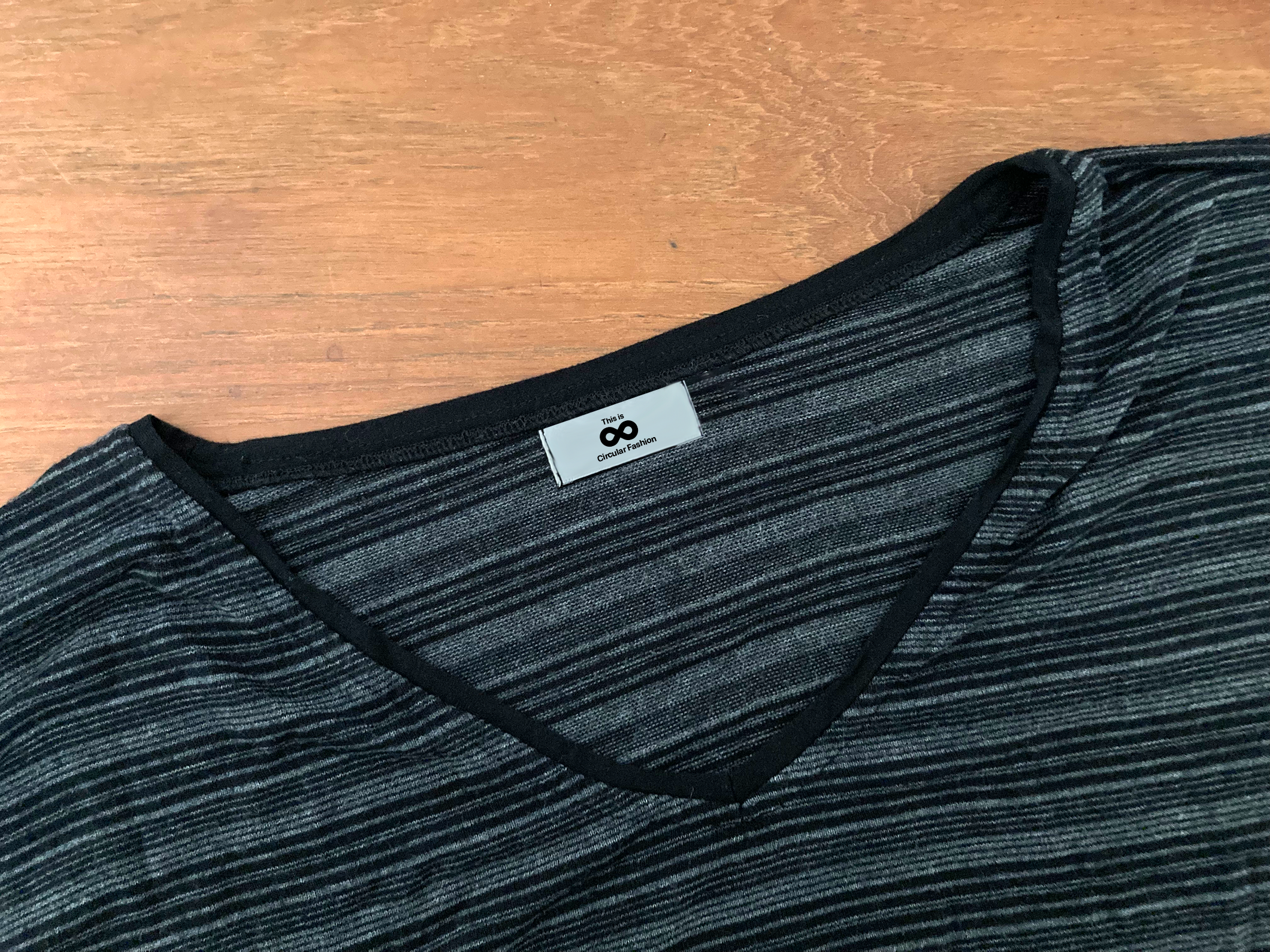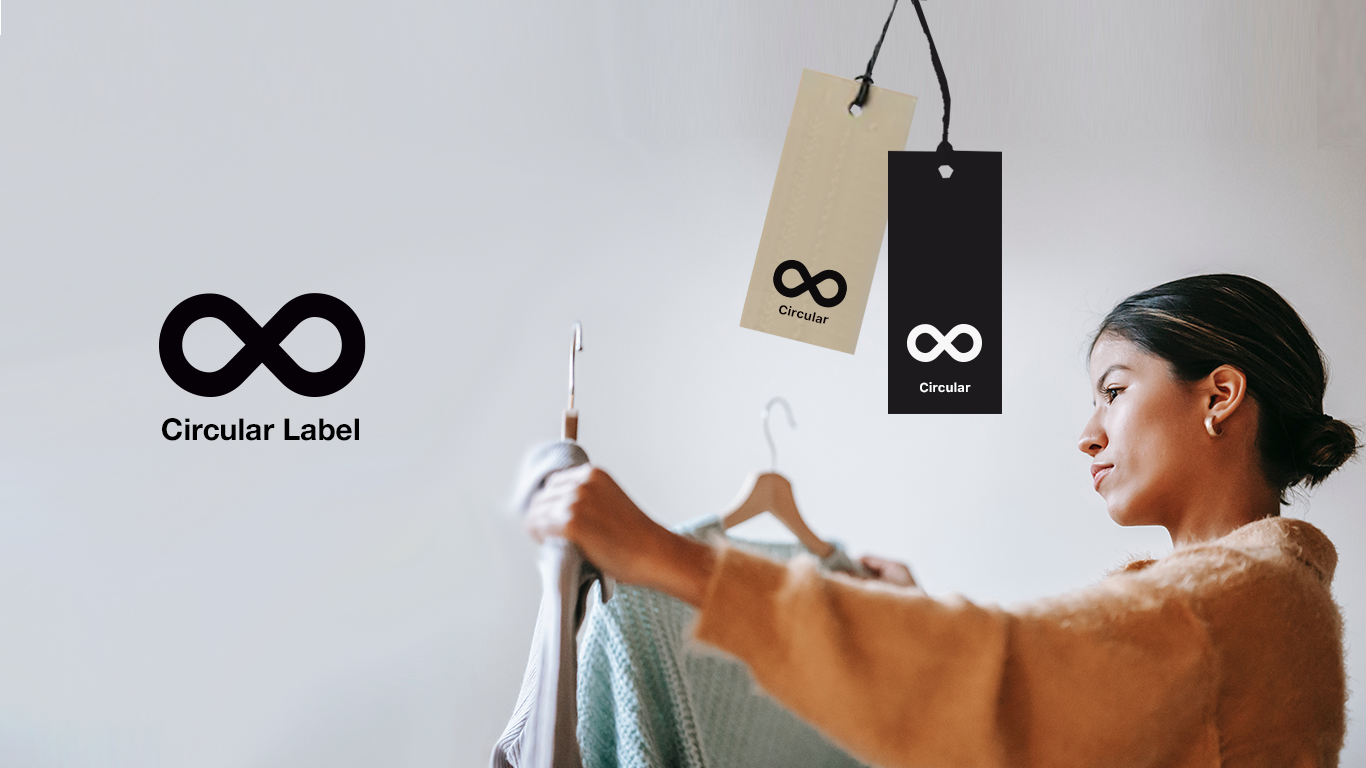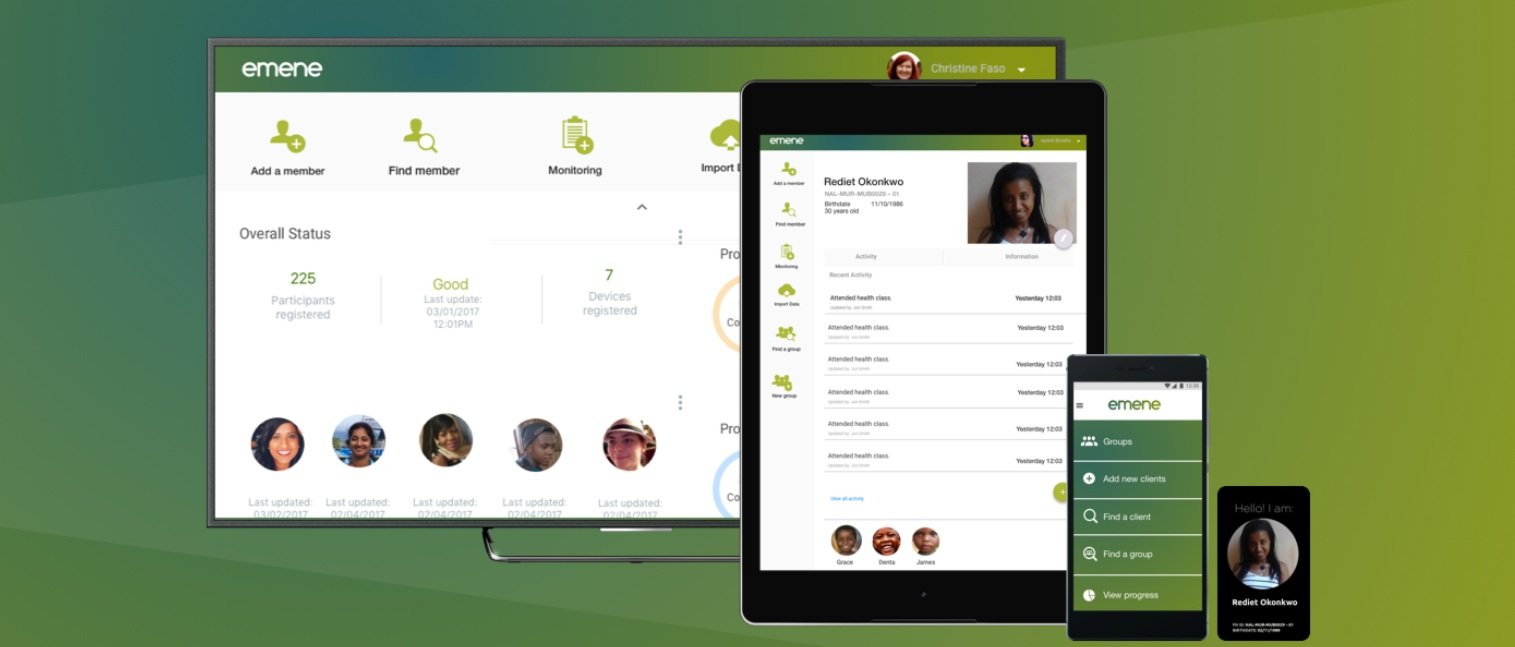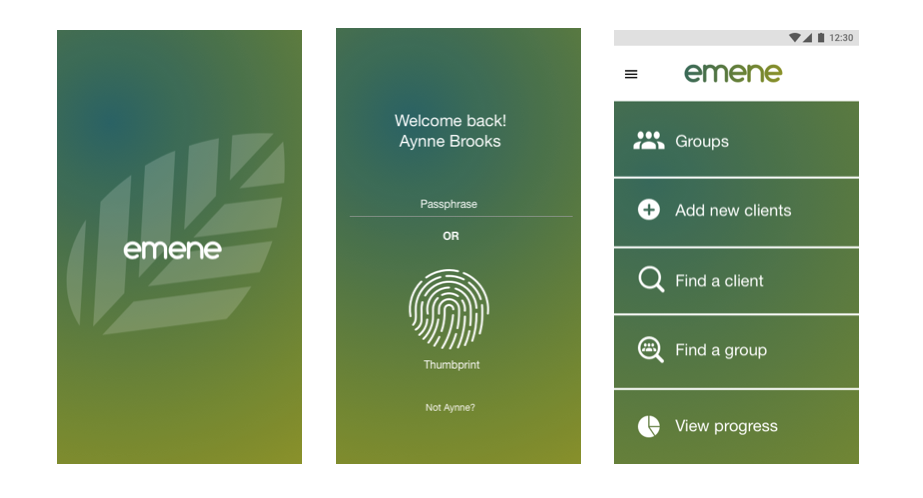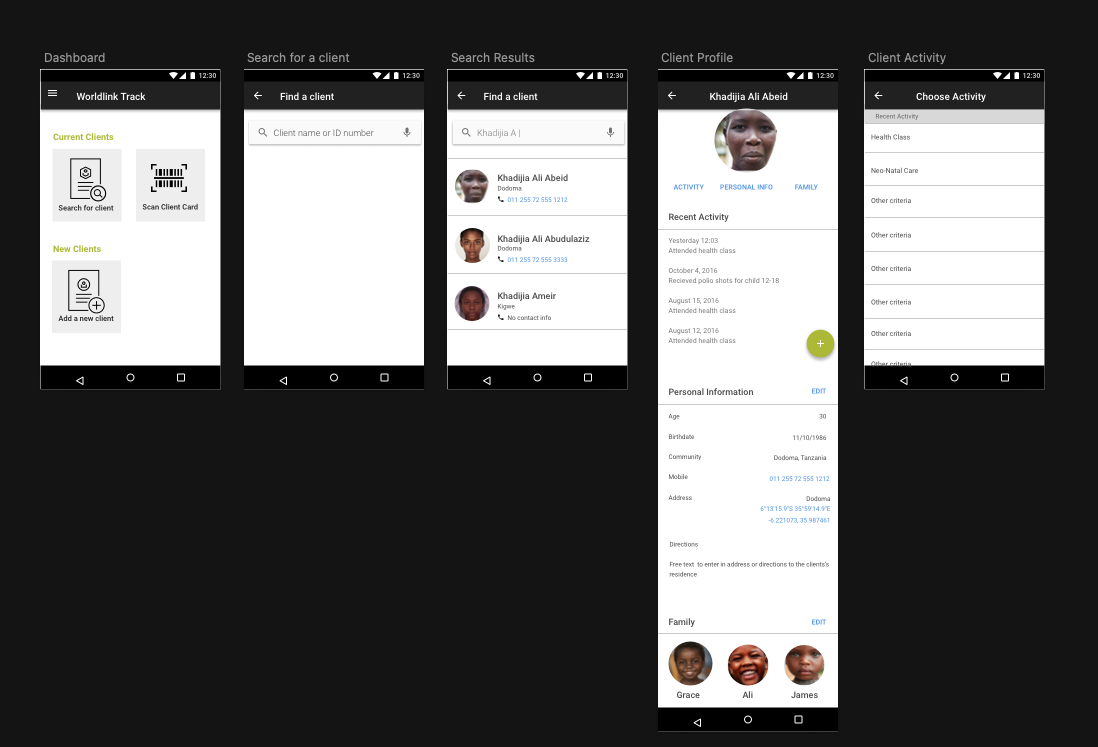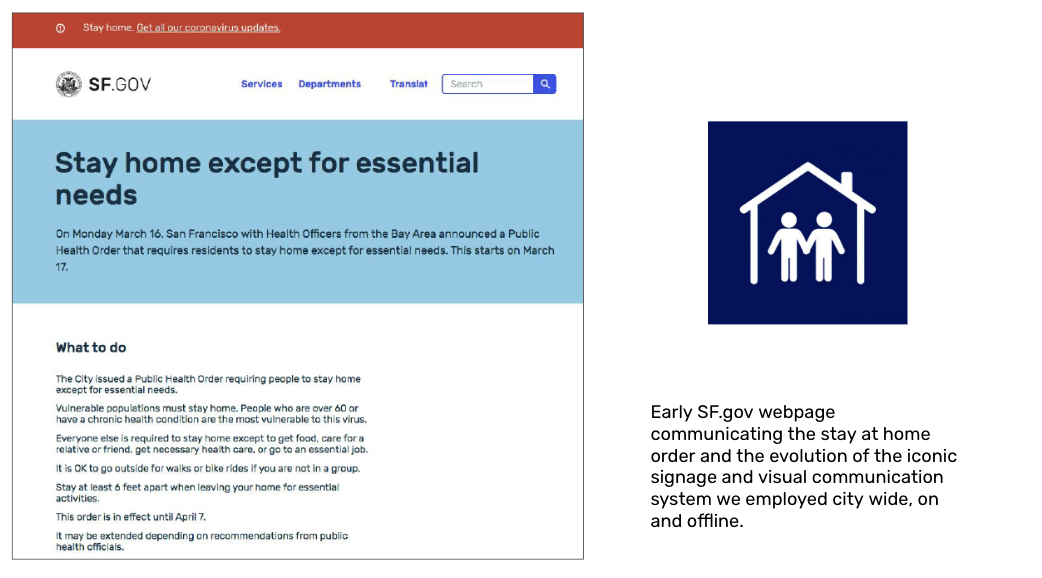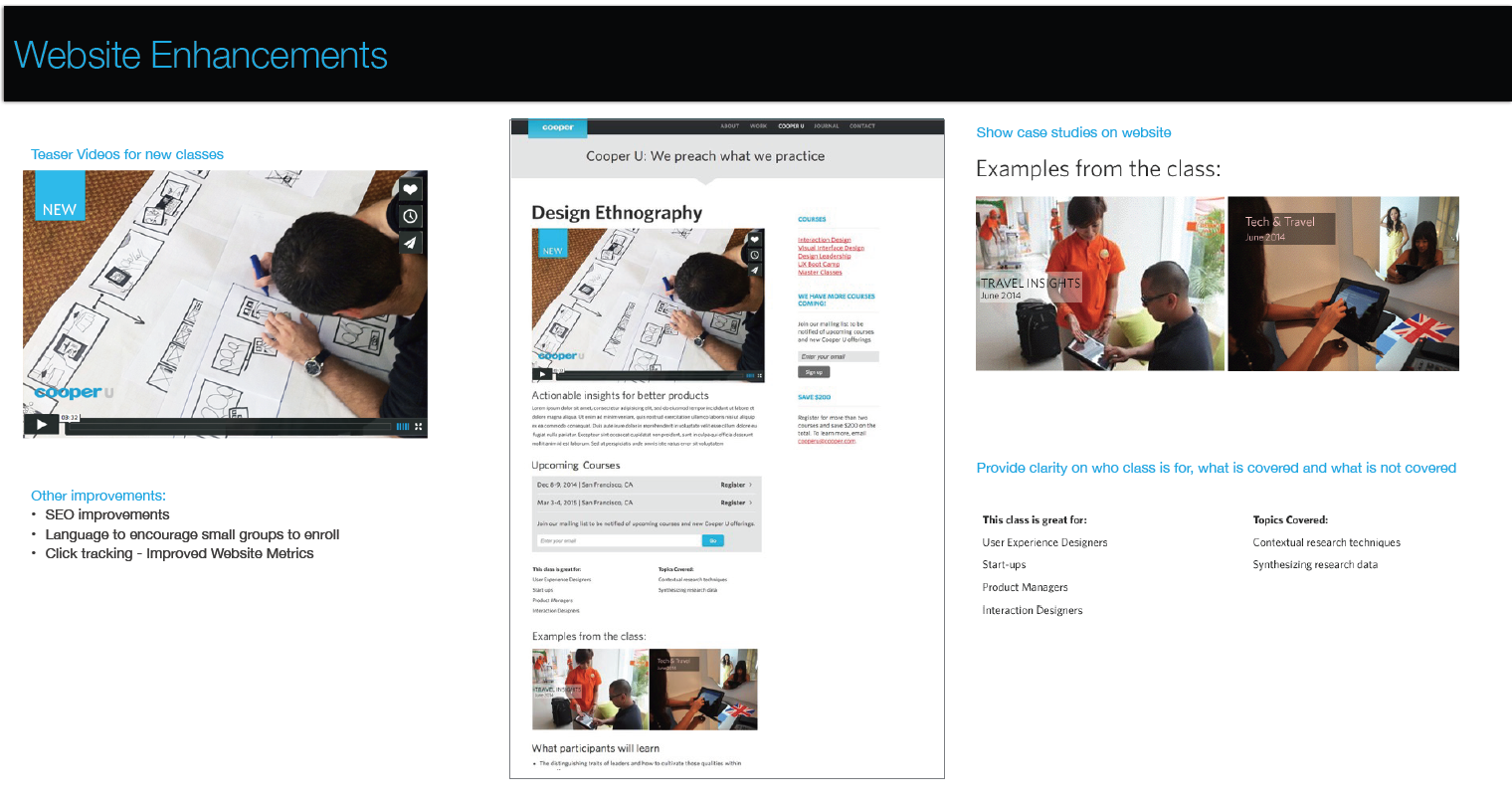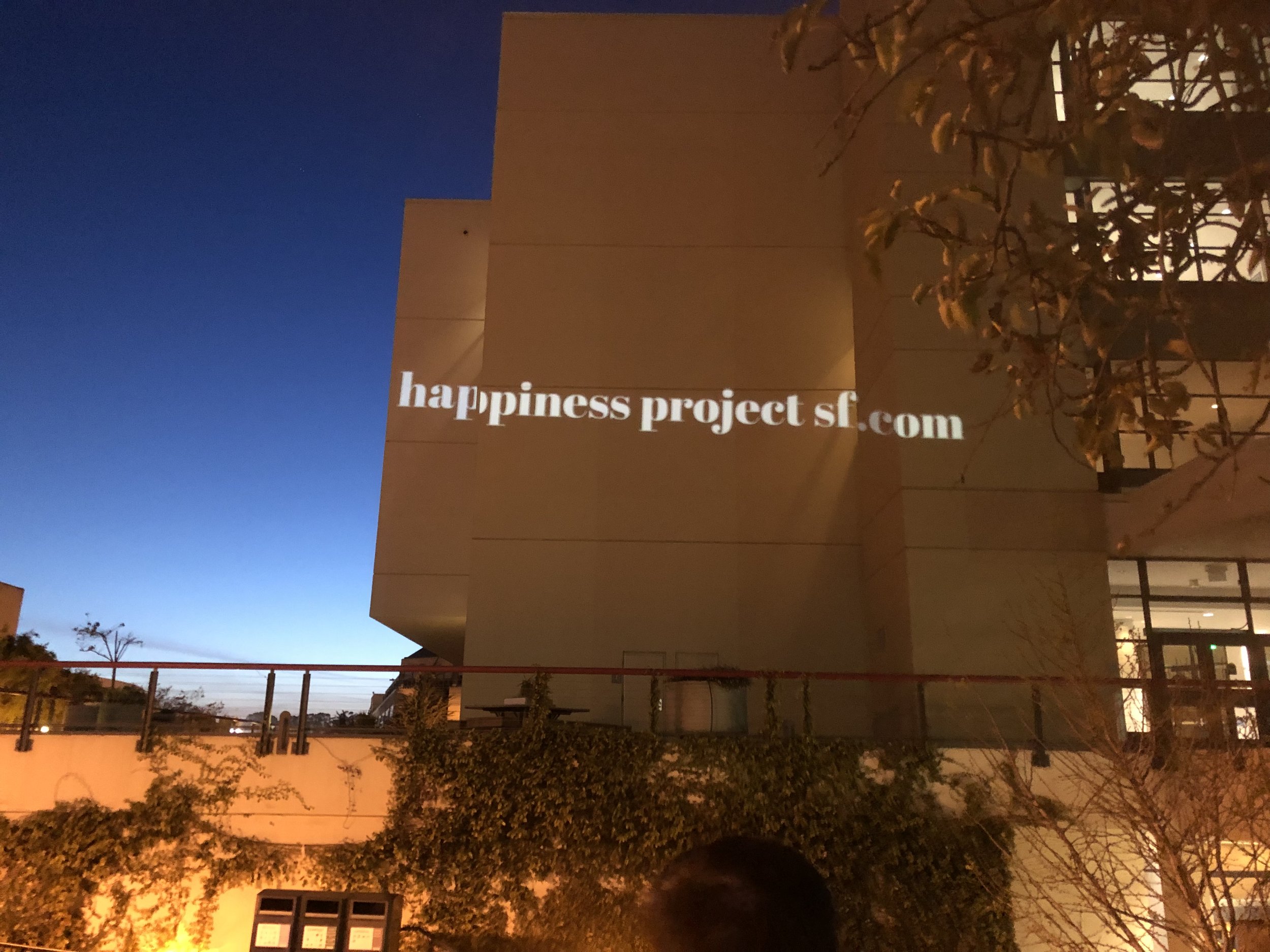Circular Fashion Label
Create market demand for renewed textiles
Branding to create a market for reclaimed fabrics
Abstract
This project proposal is the creation of a visual labeling system, brand, and marketing strategy aimed at creating demand and desire for products made from reclaimed material that would otherwise be destined for landfills. Innovate with the materials we already have.
I. Introduction
This project proposal is the creation of a visual labeling system, brand, and marketing strategy aimed at creating demand and desire for products made from reclaimed fabrics and materials that would otherwise be destined for landfills. The purpose of this consumer-aimed campaign is to complement and enhance efforts being made by government and industry best practices to expedite these important supply chain and production changes. This project began as an exploration into how to deal with the massive amount of fabric waste caused by the fashion industry and will be primarily focused on this industry, but the concept of consumer labeling for recycled, renewed and used products can potentially extend to other consumer products.
II. The Problem
A. Significance of the problem In the United states 292.4 million tons of waste end up at municipal waste dumps. Although 94 million tons of this waste gets recycled or composted the majority of it ends up buried in landfills. The reasons people discard clothing varies, the item could be out of style, a poor fit for the individual, or simply worn out. Consumer products and the fashion industry thrive on temporality and have marketing and advertising specifically designed to shift consumers' tastes from season-to-season and year to year. The industry is driven by seasons and creates a desire for the newest colors, styles, and fits.
Today’s manufacturing process begins with raw natural materials being extracted from one part of the world, synthetic materials made in other parts of the world and then shipped mostly through cargo ships around the world where they are turned into bolts of fabric, sheets of metal, and parts and then shipped to manufacturers often, yet again, across the world, to wherever the lowest-paid labor can be found and made into articles of clothing, and hard goods that are shipped yet again to countries all over the world where they are sold at retail locations. Some items are bought but lots of products end up at discount retailers or get made into bundles and shipped, yet again across the world to be sold by the pound for scrap. Eventually, the products are either worn out or never get used and end up in landfills, burned, or sadly, end up in waterways.
Today raw materials like natural or synthetic fibers are made, they are turned into bolts of fabric, shipped to apparel makers often across the world, made into articles of clothing that are shipped yet again to countries all over the world where they are sold at retail locations. Some clothes are bought but lots of clothing ends up at discount retailers or getting made into bundles and shipped, yet again across the world to be sold by the pound. Eventually, the clothing is either worn out or never gets used and ends up in landfill, burned or sadly, as I mentioned before, ends up in waterways.
Because most fashion is seasonal and driven by low margins, Retailers depend on finding the lowest cost for labor, often in countries with lax environmental policies in order to produce clothing at a cost that carries a margin high enough to make a profit, yet low enough to appeal to consumer demand for the latest styles at an accessible price. raw materials like natural or synthetic fibers are made, they are turned into bolts of fabric, shipped to apparel makers often across the world, and made into articles of clothing that are shipped yet again to countries all over the world where they are sold at retail locations.
1. Overproduction and the high cost of cheap clothes
One of the fashion industry’s problems are with deadstock. Deadstock refers to the clothing and fabric that isn’t sold. It’s never been used. Deadstock makes up 30%of the 150 Billion garments created each year. Some of this gets donated but most of these items go straight into landfills. It’s easy to address deadstock, by simply not overproducing it in the first place. But because of the way clothing is produced, the actual costs are not factored into how we think about production. The 2019 fashion industry global market value is a staggering 406 billion dollar business. (Fashion United, n.d.) and a labor force of 3,384.1 million worldwide. A garment worker in India is paid an average of Rs. 10,000 to 12,000 (US$ 133 to 160 per month), (Society for Labor and Development, 2021, #3) while in China, a garment worker gets “1120 RMB (US$161) and 2480 RMB (US$357) per month, falling far short of the estimated living wage of 5410 RMB (US$778) per month.” (Business & Human Rights Resource Centre, n.d.), in Bangladesh, a worker can expect 8000 Taka(US$94) per month. (Kuenneke, 2020)compared to the median wage of US garment workers who are paid $14.31 per hour or $2290 per month. (U.S Bureau of Labor Statistics, 2022)
Clothing manufacturing tends to move around to wherever the cheapest labor markets are. Wherever workers are abundant and willing to work for extremely low pay is where the manufacturing tends to shift. Working conditions, safety, and environmental impact are not a factor of consideration.
Today's fashion industry, particularly “fast-fashion” is a term defined as: “Clothing designs that move quickly from the catwalk to stores to meet new trends. The collections are often based on designs presented at Fashion Week events. Fast fashion allows mainstream consumers to purchase trendy clothing at an affordable price.” (Hayes, 2020) Retailers depend on exploiting cheap labor, often in countries with lax environmental policies in order to produce clothing at a cost that carries a margin high enough to make a profit, and low enough to appeal to consumer demand for the latest styles at an accessible price. Consumer tastes are shifting however, consumers are losing their appetite for fast fashion as evidenced by the bankruptcy of fast-fashion retailers like Forever 21. This trend in consumer distaste towards clothing derived from sweatshop labor could be seen as far back as 2004 as evidenced by the following survey results. “The Marymount surveys were conducted in 1995, 1996, and 1999. In each survey, three of four consumers said they would avoid shopping in a store if they knew the goods were produced under bad conditions, while not quite two of three say they would be more inclined to shop in stores combating sweatshops. The greater response to knowledge about bad conditions than good conditions suggests that consumers respond more to information that reduces their utility than to information that increases it— consistent with Kahneman and Tversky’s (1979) prospect theory that shows people weigh potential losses more heavily than potential gains. An average of 85 percent of respondents in the Marymount survey said they would pay $1 more for a $20 item if they could be assured that it was made under good conditions.” (Freeman & Ellliott, 2004, 4)Avoiding exploitive labor practices by shifting to local-based, domestic production that conforms to fair labor practices will increase the cost of individual clothing items but will decrease the unquantifiable, but very real costs of harm to the environment and local economies.
2. Product end of life
The amount of clothing that gets discarded and donated is staggering. The U.S. sends about 21 billion pounds of textile waste to landfills every year. The item that gets donated will be put into bins, sorted extremely quickly with a fast inspection looking for tears, stains, and seasonality, and only the items that are most likely to sell are tagged and sent out to be sold in thrift stores. High-value fabrics like cotton, denim, wool, linen, and leather are bundled to be sold in lots, Items that are torn, stained, missing buttons, or visibly worn out are thrown into trash bins, and items that are out of style, or not popular in the local market but are otherwise usable, get made into bundles that are sold by the ton and shipped to other continents, to countries like Ghana and Indonesia that have thriving used clothing markets. Once in these places, unwanted clothing eventually is burned, buried, or ends up in waterways. Of the clothing donated to charities, only 10-15% of it actually ends up in the secondhand market. (McCarthy, 2018). Clothing is sorted and this waste has a negative impact that is long-lasting. Fabrics, particularly synthetic fibers like nylon and polyester blends can take up to 200 years to break down and while they do, they emit toxic greenhouse gases that exacerbate our climate crisis. (McCarthy, 2018)
This is where circular fashion comes in. Circular fashion, related to the term circular design, is an emerging industry term for apparel that is designed from the beginning with the goal of making the end of life of the product as safe for our planet as possible.
A. Innovations
I started with desk research and speaking with fashion industry professionals to get a better understanding of the terms and way they look at the category of discarded clothing. I found that there are three types of clothing that could fit in the circular fashion category.
There are countless initiatives and innovations focused on solving the problems of over-production and end of life for fabrics. There are three that have direct relevance to the ability of circular systems to succeed.
1. Upcycling
Upcycling means converting a material into something of greater value than it originally was. Upcycling refers to reusing an object in a new way without degrading the material it is made from, as opposed to recycling which generally involves breaking down the original material and making it into something else, using more energy in the process. People have been upcycling for centuries, using old packaging and clothing in new ways, although more out of need than for the environment.
Supporters of the environmentally friendly practice of upcycling say people in developing countries have effectively been upcycling for years, using old packaging and clothing in new ways, although more out of need than for the environment. but upcycling is now taking off in other countries, reflecting an increased interest in eco-friendly products, particularly ones that are priced at an affordable level and proving profitable for the manufacturers. (Goldsmith, 2009)
Upcycling fabric to create new fashion is not new. If one visits Etsy, one will see 362,010 results for “upcycled” products. These are mostly small boutiques using unique one-of-a-kind pieces.
2. On-demand production
Made to measure, custom clothing is an old practice that is making a comeback with some retailers. EShakti, an online retailer based in India, creates made-to-order clothing based on simple patterns. The hope for this practice in the future could be reclaimed fabric that is produced on-demand in local, worker-owned cooperatives.
3. Reprocessing - reclaimed by manufacturer
Deadstock and used clothing can be reclaimed but it’s critical that they are sorted properly to enable them to either be reprocessed or reused. One of the pain points for this is sorting. Discarded clothing can be sorted much like donated clothing is today. When an article is donated to the processing center, speed is of utmost importance, and a quick inspection of each piece is given. Torn, stained or dirty items go to a discard bin and usable items are priced and hung up for sale, or sorted into bins based on their condition. The most valuable items are designer or name brands, in-season fashions, and anything with identifiable natural fabrics like wool and cotton, as well as higher quality poly blends.
It can be almost impossible to detect what type of fabric content is in any article of clothing by looking at it or even touching it. Sorters can typically identify most of these but some of the polys are harder to identify. Polyester is a problem because depending on the make-up of the blend, discarding the item means it will not biodegrade nor can it be burned without emitting toxic fumes.
It can be very difficult to tell the difference between natural and synthetic fabric content, and currently, the only way to tell is to examine the fiber through a a microscope which is time-intensive and impractical. However, research and experimental projects employ computer vision, machine learning, and microscopy to identify cells (Deep Learning on Microscopy Imaging Detecting Good, Bad and Ugly Cells with Deep Learning, 2019). Microscopic photography in combination with computer vision and machine learning is one of the promising possibilities for reclaiming and recycling textile fabrics at the production and manufacturing scale. Experimental research on the technical feasibility of using micro-geometry and surface reflection (Kampouris et al., n.d., 3) has been explored at the Department of Computing, Imperial College London with promising results and thus, with more robust sample sets and crowdsourced fabric samples that can be used to create libraries, it will soon be possible to overcome the biggest obstacles to solving the problem of processing reclaimed materials at scale.
But detecting the fabric content is theoretically possible using microphotography and machine learning. The example above shows the difference between cotton and polyester under a microscope. This technology is in its early research and development phase but is theoretically possible to do today. During the past year, I worked with a company that is using this technology to identify material content and defects in materials like clay, cement, and plastic. By using this same technology and training Convolutional neural networks (CNNs)—A type of neural network designed for interpreting visual data. one can distinguish and disambiguate the fabric content. No one is doing this today as the cost for the equipment is prohibitively expensive at this time, but costs for this equipment are becoming more and more attainable each year as the need increases. An experimental technology is of no use if there is no market demand or regulatory pressure for it, which is why focusing on creating consumer demand with a campaign centered around recognizing brands that adhere to emerging policy standards is important to expedite the changes needed.
Brand Design
This is where circular fashion comes in Circular fashion is an emerging industry term to for apparel that is designed, sourced, produced, and provided with the intention to be used and circulate responsibly and effectively in society for as long as possible in their most valuable form, and hereafter return safely to the biosphere when no longer of human use. Basically, designed from the beginning with a goal of making the end of life of the product as safe for our planet as possible.
The Circular Fashion Identity System
An item can be considered “Circular” if it complies with the upcoming Ecodesign for Sustainable Products Regulations. This means the item will be made of a to-be-determined percentage of content made of recycled fibers, free of hazardous substances, and produced with respect for social rights and the environment. This will likely mean the clothing will be composed of long-lasting fabrics that eventually are able to decompose with low off-gas emissions. In order to gain higher adoption for this program, the Circular fashion identity system also seeks to promote the practice of upcycling and purchasing used clothing as it conforms with the ecological goal of diverting the materials we already have from landfills, burning, and waterways.
Logo in English and Spanish, French, Simplified Chinese, German, Hindi, and Japanese
The typeface is Poppins and is available on Google Fonts. The font was chosen for its weight and legibility and the ease with which fonts from different language characters can be applied to it for localization.
NOTE: in some languages “Circular” has been changed to “reusable”
Since Circular is not a brand itself, this creates challenges in how to express the value proposition by enhancing but not overshadowing the brand. Since circular can stand for new clothes or used fabric, copy and language are particularly important. For new clothing stressing the way an item is made, and being clear about the product being made to last beyond the initial buyer is important.
This global pandemic has inadvertently been a chance to do things differently; to experiment with new ways of thinking and prioritizing. It is also a time for reflecting on what past behaviors are no longer working.
We need to use the things we already have in a more sustainable way, for ourselves and our future generations.
Bibliography
Fashion and Sustainability Design for Change.by Lynda Grose
Cradle to Cradle. Farrar, Straus and Giroux.
Naked Fashion: The New Sustainable Fashion. New Internationalist.
Articles
Federal Energy Efficiency Programs. The American Council for an Energy-Efficient Economy (ACEEE) Fact Sheet. aceee.org/portal/national-policy
European Commission. (2020, April). Products and the Circular Economy. Policy recommendations are derived from Research & innovation projects. https://cfsd.org.uk/wp-content/uploads/2020/05/Products-and-Circular-Ecomony-April-2020.pdf
Fashion United. (n.d.). Global Fashion Industry Statistics
https://fashionunited.com/global-fashion-industry-statistics/
.Goldsmith, B. (2009, September 30). Trash or treasure? Upcycling becomes a growing green trend. Reuters. https://www.reuters.com/article/smallBusinessNews/idUSTRE58T3HX20090930
Hayes, A. (2020, April 10). Fast Fashion. Investopedia. https://www.investopedia.com/terms/f/fast-fashion.asp#:~:text=Fast%20fashion%20is%20the%20term,clothing%20at%20an%20affordable%20price.
McCarthy, A. (2018). Are Our Clothes Doomed for the Landfill
https://remake.world/stories/news/are-our-clothes-doomed-for-the-landfill/
Turner, M. (2010). Is LEED a True Leader? Claremont College Department of Environmental Policy.
Braungart, M., & William McDonough, W. (2002). Cradle to Cradle. Farrar, Straus and Giroux.
Brooks, M. (2012, March 12). Identifying Fibres and Fabrics. Dress and Textiles Specialists and Victoria Albert Museum. https://www.dressandtextilespecialists.org.uk/wp-content/uploads/2015/04/Fibres-Fabrics.pdf
Centro Corporativo de Mondragon. (n.d.). Mondragon. https://www.mondragon-corporation.com/en/about-us/
Creemers, R. (May 9, 2018). China’s Social Credit System: An evolving Practice of Control. Leiden University, Van Vollenhoven Institute.
Deep Learning on Microscopy Imaging Detecting Good, Bad and Ugly Cells with Deep Learning. (2019, July 7). Toward data Science. https://towardsdatascience.com/deep-learning-on-microscopy-imaging-865b521ec47c
European Commission. (2020, April). Products and the Circular Economy. Policy recommendations are derived from Research & innovation projects. https://cfsd.org.uk/wp-content/uploads/2020/05/Products-and-Circular-Ecomony-April-2020.pdf
Fashion United. (n.d.). Global Fashion Industry Statistics. https://fashionunited.com/global-fashion-industry-statistics/
Fletcher, K. (2012). Fashion and Sustainability Design for Change. Laurence King Publishing.
Freeman, R. B., & Ellliott, K. (2004, December). White Hats or Don Quixotes? Human Rights Vigilantes in the Global Economy. National Bureau of Economic Research, Emerging Labor Market Institutions for the Twenty-First Century. https://www.nber.org/system/files/chapters/c9950/c9950.pdf
Goldsmith, B. (2009, September 30). Trash or treasure? Upcycling becomes a growing green trend. Reuters. https://www.reuters.com/article/smallBusinessNews/idUSTRE58T3HX20090930
Hayes, A. (2020, April 10). Fast Fashion. Investopedia. https://www.investopedia.com/terms/f/fast-fashion.asp#:~:text=Fast%20fashion%20is%20the%20term,clothing%20at%20an%20affordable%20price.
Kampouris, C., Zafeiriou, S., Ghosh, A., & Malassiotis, S. (n.d.). Fine-grained material classification using micro-geometry and reflectance. Intelligent Behavior Understanding Group Newsletter.
Koetse, M. (2017, Oct 1). The Social Credit System – Part II. Asia Society. https://asiasociety.org/switzerland/social-credit-system-part-ii
McCarthy, A. (2018). Are Our Clothes Doomed for the Landfill? Remake, The clothing that ends up in landfills can sit there for 200-plus years, and as it decomposes, it emits methane—a greenhouse gas more potent than carbon. https://remake.world/stories/news/are-our-clothes-doomed-for-the-landfill/#:~:text=The%20U.S.%20alone%20sends%20about,up%20in%20the%20secondhand%20market.
Minney, S. (2012). Naked Fashion: The New Sustainable Fashion. New Internationalist.
Pickety, T. (2018). Capital in the 21st Century. Harvard University Press.
Skudlarek, R. (2017, January 17). Color-Changing Fabrics. Emerging Technologies Research Collaboratory. https://etrc.umn.edu/color-changing-fabrics
Working Party on Measurement and Analysis of the Digital Economy. (2016, June 13). Working Party on Measurement and Analysis of the Digital Economy. NEW FORMS OF WORK IN THE DIGITAL ECONOMY. http://www.oecd.org/officialdocuments/publicdisplaydocumentpdf/?cote=DSTI%2FICCP%2FIIS(2015)13%2FFINAL&docLanguage=En
What is a circular economy? (n.d.). Ellen MacArthur Foundation. Retrieved April 20,
2022, from https://ellenmacarthurfoundation.org/topics/circular-economy-introduction/oveview
EU Strategy for Sustainable and Circular Textiles. (n.d.). European Commission.
National Overview: Facts and Figures on Materials, Wastes, and Recycling | US EPA. (2021, July 14). US Environmental Protection Agency. Retrieved April 24, 2022, from https://www.epa.gov/facts-and-figures-about-materials-waste-and-recycling/nnational-overview-facts-and-figures-materials
Related Projects
Student work from CCA
Work by my students at CCA
I have spent the last five years teaching classes and in leadership as Chair and Associate Chair at CCA in the BFA Program as Program Chair and the Masters of Design program as well.
I have some of the work by my students here:
Tula, 2021 by Ryan Koble
Advisor: Aynne Valencia
Project Team: Mariana Martinez , Colin Swenson, Isamu Taguchi
Professors: Aynne Valencia and Alexander Baumgardt
Project Team IxD BFA Students Danielle Forward, Daniel Klein, Jack Gale
Professors: Aynne Valencia and Alexander Baumgardt
Ebb is a smart energy & water management system for apartment buildings that uses illustration to visualize data feedback
EM by IxD BFA Students
Christopher Piniati and Essie Kim
Experience Design 2016
Professors: Aynne Valencia and Alexander Baumgardt
Em is a wearable journaling device that listens to your thoughts and enables you to connect with someone going through a similar experience when prompted. Em helps you build a narrative around the thoughts, feelings, and experiences that you catalog.
The heirlooms are the stories, advice, and empathy shared between two people.
Oracle Design for Trust Studio, 2019
Course Leader: Apurva Shah
Program Chair: Aynne Valencia
Visa and CCA IxD.
Course Leader: Alexander Baumgardt
Program Chair: Aynne Valencia
Related Projects
Food for the Hungry
Emene is an ecosystem that allows FH to conduct client relationship management, service and supply deployment to regions in crisis, and overall measurement, evaluation.
Team communications and response deployment for humanitarian crisis situations
About the Product & Service
Emene is a system designed for FH (Food for the Hungry). Emene is an ecosystem that allows FH to conduct client relationship management, service and supply deployment to regions in crisis, and overall measurement, evaluation.
Emene aka; Xindicate is the white label version of this measurement & evaluation system for Global Aid providers. This service and digital system enables NGO field staff to enroll aid participants, distribute goods, money and services, track where aid is most needed, record activity, send metrics and evaluate program metrics.
This product launched in 2017 for use in Central Africa (Tanzania, Ethiopia and Democratic Republic of Congo as a beta pilot for Food for the Hungry in cooperation with USAID global NGOs.
Role: Service design, visual design, interaction design
The entire system is comprised of a desktop web service that shows program analytics, an android tablet application experience used for large scale client registration and crisis deployment and an android mobile application that allows for remote, ongoing client data collection and supply distribution.
Team leader using the cards to take attendance in Tanzania
Create new client record flow (online and offline)
Search for client flow
How the system works
Users and touchpoints
Llama Foods
Llama Foods brings quality foods to food deserts, sustainably and equitably. This project is an exploration of what we could do with a few trucks and food donations.
Llama Foods brings affordable, quality food to food deserts and employ people from these communities with fair wages.
The 2020 pandemic amplified the inequity that has always been present in our country.
“Members of minority racial and ethnic groups are disproportionately represented among COVID-19–associated deaths.” *
The virus propagated in low-income communities of color—individuals who do not have the luxury of working remotely. Nutritious food is critical for breaking the cycle of chronic disease (poor food → poor health → more bills → less money → poor food). More access to more nutritious food gives these communities a fighting chance against future pandemics.
Communities where access to preventative health care and even access to food exacerbates the prevalence of pre-existing conditions such as heart disease and diabetes, which also made these communities particularly vulnerable.
The problem is staggering. 38 Million Americans live in poverty, and many live where easy access to nutritious food is impossible.
A food desert is where people have low incomes and low access to quality food. The Bay area is home to 9 of America's worst food deserts, and right here in San Francisco, we have a large part of the city that is considered a Food Desert.
Llama Foods
Bringing quality foods to food deserts sustainably and equitably.
Aynne Valencia, Amy Cheng, Audrey Graves
Dear SF
#DearSF is a campaign, an open letter to San Francisco.
From workers in the industry to their beloved supporters, we welcome your expressions of survival, resilience, support, pride, and love. This project was initiated by the Entertainment Commission and my role was social media strategy and creative direction.
DearSF is a multimedia love letter to San Francisco.
San Francisco’s small businesses and entertainment venues are going through a dramatic, disorienting, and painful transition during this unprecedented pandemic.
#DearSF is a campaign, an open letter to San Francisco.
From workers in the industry to their beloved supporters, we welcome your expressions of survival, resilience, support, pride, and love.
This project was initiated by the Entertainment Commission and my role was social media strategy and creative direction.
This project began on June 6th and is part of the cities reopening process.
https://www.dearsf.org/
https://www.instagram.com/dear_sf/
Related Projects
Stay in place shelter
The stay-in-place shelter is for people in at-risk situations and families experiencing homelessness during the coronavirus crisis. The first location was at Bayview pier. I worked with several departments at the City and County of San Francisco to pull together experience design, signage, and materials.
The stay-in-place shelter is for people in at-risk situations and families experiencing homelessness during the coronavirus crisis.
The first location was at Bayview pier. I worked with several departments at the City and County of San Francisco to pull together experience design, signage, and materials.
This was used for postcard outreach and main signage at the entry to the shelters
Some considerations for the design approach.
Informal
Should not feel like a government institution. Many people experiencing homelessness have had negative interactions in the past and we want them to feel safe.
Open
While folks are expected to stay in place there, we don't want them to feel trapped
Warm
Through colors, giving the temporary rows of trailers street names, and trailers addresses the intent is to create a sense of dignity and normalness.
Temporary
Use of the word Guest, Staff will be hosts. Implying a relationship that is akin to a hotel or any temporary stay.
Signage
Signage in place prior to opening day
Related Projects
Design in the time of a pandemic
This last month has been the most rewarding time I have had in years. I have been delighted to be able to roll up my sleeves and pitch in to help during this crisis.
Going digital, fast.
In the Fall of 2018 I saw an opportunity that I couldn’t possibly turn down. I saw an opening for the Design Director for the City and County of San Francisco Digital Services. The fact that I already had a job was certainly a deep complication, but the opportunity to serve the city I love to lead the design team and apply what I have learned all these years in tech and design was too tempting to pass up.
The first few months were an adjustment. I had a new team who didn’t know me and who I didn’t know either. While I understand the hierarchies and politics of big companies, I didn’t know how to navigate the waters of Government from the inside. I found that the timelines were paced differently than I was used to, and while the problems we were solving were complex, they were not complex in the more experimental/pushing the envelope on technology that I was used to. I thought the biggest challenge ahead of me for 2020 was design operations, scaling the team, and evolving the existing design system. And then, the COVID-19 Pandemic happened.
The first signs things were changing were so small they were almost imperceptible. I attended a conference in Milan, Italy, and we discussed the possibility of something major happening, but still, it was in a distant, academic way. And then came the day we were told to work from home. And suddenly, everything sped up and slowed down at once.
The city suddenly needed to go digital and fast. In a month or so my team delivered:
High-level UX flow for worker and family first program
SF.gov COVID Response Content News and information for everyone in the city
Workers and Family Fund: A program to help small businesses pay sick leave to employees
Electronic Plan Review: An online Electronic plan review process and service to keep critical building permits moving along
SF VolunteerAn online service for people to volunteer to help seniors
One of the mentions The Mayor made of a program I worked on.
City TestSF A COVID testing site and the online scheduling tool used to book an appointment and a touch-free communications platform for on-site communications.
My team members worked in the Emergency response command center and created the signage anyone could see throughout the city.
I was delighted to be able to roll up my sleeves and pitch in to help during this crisis. I have been proud and amazed by the team who has been working tirelessly to make this frightening and bewildering situation calmer and organized for the staff of the city and, most importantly, to the residents and businesses of San Francisco that we serve.
Related Projects
Designing Interfaces 3
Designing Interfaces 3
This is the first published book I have worked on. We got the book done in a record 2 months.
It was an honor to have my first book be on such an iconic book with co-author Charlie Brewer and help from Jennifer Tidwell and the team at O’Reilly.
I have another technical book I am writing now which is about designing for entirely new interactions when there are no prototyping tools to design for them. This has been a repeated pattern in my long career in hardware/software and breaking new ground in ways of interacting with products and services.
Designing Interfaces 3
Cooper U
Design strategy for Cooper
Enhancing new lines of business
Reengaging alumni
Cooper design wanted to expand their Cooper U Education design offering. I conducted a market analysis, reviewed competitors, interviewed internal employees, customers and potential customers and conducted a several surveys and three month round of interviews to create a strategy and roadmap for targeting new lines of business.
High level strategic recommendations based on market and customer research
Current customer journey
Experience map
Related Projects
Happiness Project SF
The Happiness Project is a crowd-sourced, interactive installation that takes place in different locations throughout the Bay Area.
The Happiness Project is a crowd-sourced, interactive installation that takes place in different locations throughout the Bay Area.
Through a series of posters, flyers, online ads, and social media the public is asked to contribute works of art, words of encouragement and positive affirmations to make others happy. You can submit via an online form at the thehappinessprojectsf.com or by using the hashtag #thehappinessprojectsf on Instagram or twitter.
Upon submission of photos or written short messages, those who chose to give their email address will be invited to the next impromptu site-specific projection for a gathering. They will see their words or art projected on a massive screen. Submissions are screened to ensure the content fits with the mission of the project.
The Happiness project will be launching Summer of 2019 and run in select locations.
In a world filled with division, the happiness project seeks to bring others together to share simple, everyday joy and if only for a moment, make the day a little brighter and spark unexpected magic.#happinessprojectSF
MBA in a Box
Platform for students and college professors. This desktop and tablet application powers the online learning and communications component for a large university.
Features
“Classroom” screen
Online education platform tool for Apollo Group
Fjord
Role: Creative Direction, Service Design, Client Lead
The Brief:
Apollo group was seeking a tablet based solution for online learning for student and teachers.
This touchpoint needed to easily port over content from their existing web platform and needed to keep the existing user interface conventions and metaphors and the architecture needed to adapt to the existing system as much as possible.
Process
This project was a year long engagement. My role was leading the concept and design process and transitioning work to the IOS development team. We had 6 weeks for information gathering, user interviews and identifying business rules and workflow, 6 weeks of rapid prototyping and design validation/co design sessions with users. 4 weeks of application architecture and template design, 2 weeks of visual system design and documentation and 3 weeks of design validation. We then went to development and continued to do user validation and QA.
Visa - Go Campaign Digital Strategy
Visa global marketing - Go Campaign launch digital strategy
Campaign Landing Experience
Bank cards co-branded for Visa Go
Point of Sale Branding
The Brief:
Make Visa the preferred payment method over others at the point of sale.
I was digital product design director on the team that created a series of strategic programs to make Visa the preferred payment method over cash at the point of sale.
This project included looking at how Visa can provide compelling online, point of sale and socially oriented
services and experiences that would make the consumer choose Visa.
The example is below is one of the programs.
Research Insight:
Selecting your payment option at point-of-sale is more habit than conscious choice, making it very difficult to change. in Visa World of Change I considered how we might we turn everyday transactions into socially rewarding actions.
Visa World of Change
With every transaction, cardholders donate one penny to a cause they care about. As people around the world join in, pennies add up to big changes, giving cardholders a real reason to use Visa over cash.
Purchase Funnel: Focus on point of transaction
Channels: Targeted point of sale placements and social networks
MCC’s: Inclusive of all categories •Global: Identify charity with global appeal and tailor executions and communication channels based on countries digital lifestyle
POS Considerations: Core to the idea, advertising will focus on POP placements to drive Visa preference at the final step of the transaction
Details:
1. Visa kicks off World of Change by contributing $1 million (in line with FY09 levels) to five charities it already supports.
2. Initially, Visa partners with it’s the top issuer in each of the five markets.
3. Visa/AKQA promotes the program through PR and recruits cardholders with advertising and direct mail.
4. Cardholders join the program by registering their Visa card with the issuer and choosing a favorite cause.
5. POS signage reminds cardholders to use the card over cash and competitors. Each month the issuer adds a penny per transaction to the cardholder’s bill and forwards the total to the designated charity.
6. Issuers forward contribution data to Visa for display on the World of Change site.
7. Cardholders recruit friends through social networks and track progress online.
8. As the program grows, Visa partners with other issuers.

